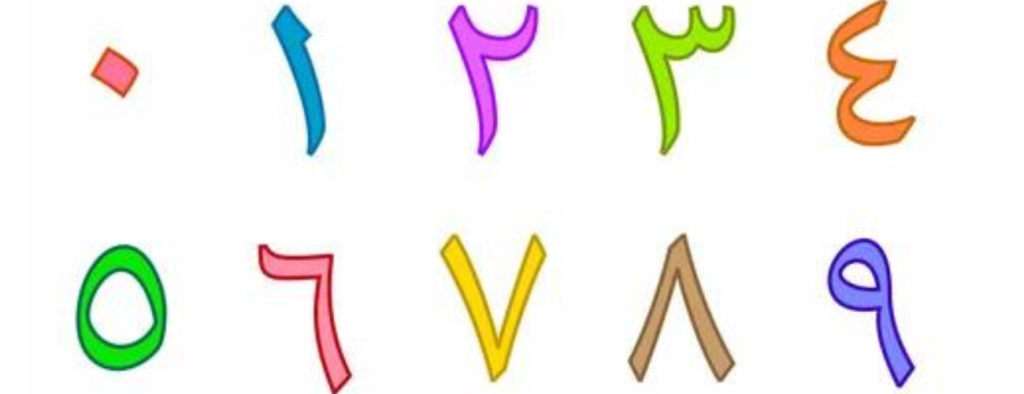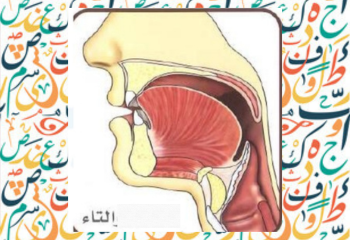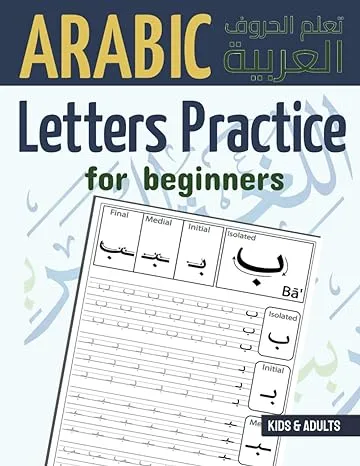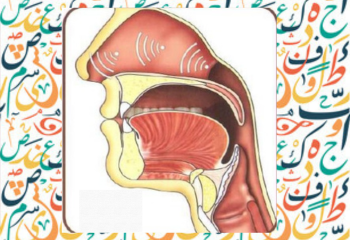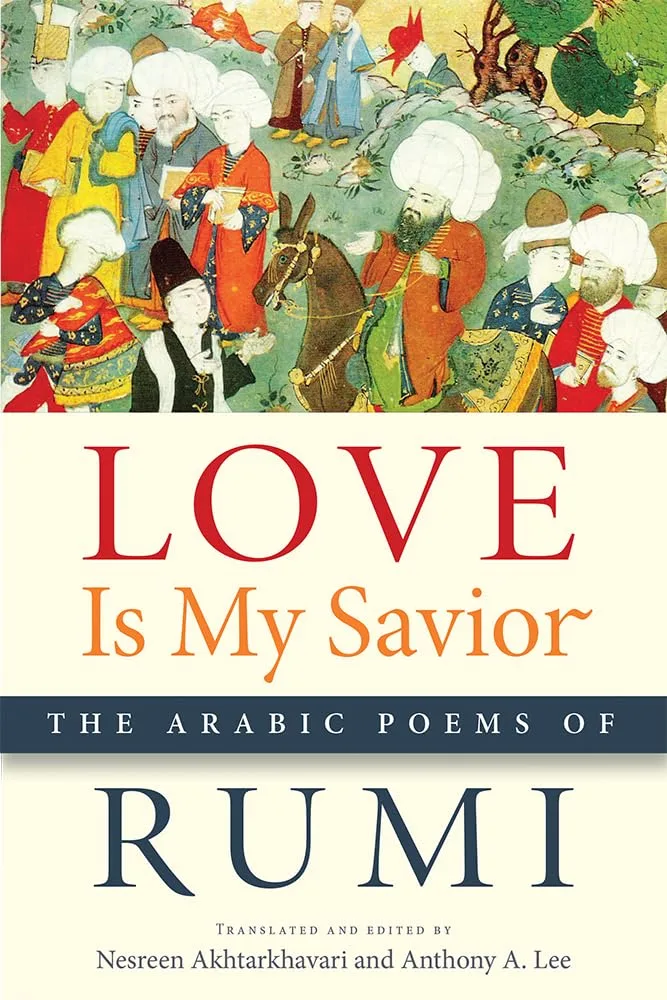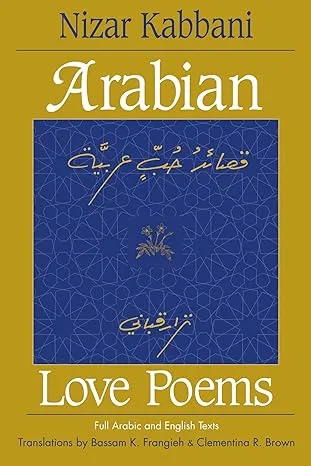The Arabic letter ha ح is the sixth letter of Arabic alphabets. Here you will learn how to pronounce letter ha ح in Arabic and how to write Arabic alphabet ha ح . You will also learn the different shapes of letter ha ح with examples.
Equivalent of ha ح in English
The letter ha ح equivalent in English is letter “H” and has “h” phonics.
It has the same shape as of jim ج letter but difference is that jim ج has one dot in it and it ح has no dot in it.
As in Arabic letters dots n position of dot is very important as it can make big difference. You will learn it more in later posts as you will learn other Arabic letters.
How to pronounce ha ح
How to write ha ح
Different shapes of ha ح
| final | middle | starting | isolated |
| ـح | ـحـ | حـ | ح |
Examples of ha ح in isolated shape:
شرح (sharḥ) – explaining or clarifying
قرح (qarḥ) – wound or injury
فرح” ( farḥ)- joy or happiness.
Examples of ha حـ in starting shape:
حب (hubb) – Love
حياة (hayat) – Life
حلم (hulm) – Dream
Examples of ha ـحـ in middle shape:
تحدي (tahaddi) – Challenge
قحط (qahṭ) – Drought
رحم (raḥima) – Mercy
Examples of ha ـح in end shape:
سكينح (sikkinh) – Knife
جميلح (jameelh) – Beautiful
حسنح (ḥasanh) – Good
Articulation point of ha ح
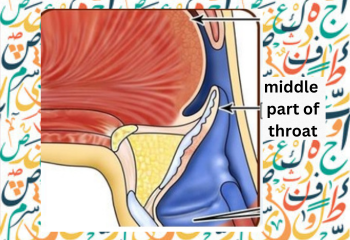
Letter ha ح is pronounced from middle of throat
Ha ح is a moon letter
The distinction of “sun letters” (حروف الشمس) and “moon letters” (حروف القمر) is fundamental in determining the pronunciation of the definite article “ال” (al) when it precedes certain consonants in Arabic.
When the definite article “ال” is added to a word starting with a sun letter, a seamless assimilation occurs. For example, “الشمس” (ash-shams) means “the sun,” with the “l” sound smoothly blending into the following “sh.”
When the definite article “ال” is applied to words starting with moon letters, the “l” sound remains distinct. For instance, “القمر” (al-qamar) signifies “the moon,” with the “l” sound clearly separate from the following “q.”
So ha “ ح” is a moon letter
The letter “ ح” (ha) in Arabic is indeed a moon letter. When the definite article “ال” (al) is prefixed to a word beginning with “ ح” assimilation does not occurs, and the “l” sound of “al” does not combines with the “h” sound of “ ح.”
Here are some examples:
- الحياة (al-ḥayāh) – The life
- الحب (al-ḥubb) – The love
- الحديقة (al-ḥadīqah) – The garden
- الحاسوب (al-ḥāsūb) – The computer
- الحقيقة (al-ḥaqīqah) – The reality
- الحظ (al-ḥaẓ) – The luck
- الحرية (al-ḥurriyyah) – The freedom
- الحلم (al-ḥulm) – The dream
- الحمام (al-ḥamām) – The bathroom
- الحرارة (al-ḥarārah) – The heat
Characteristics of letter ha ح
The traits of the letters set them apart from other letters that have the same articulation point.
The proper use of the letter characteristics clarifies the letters and explains the different timings of the saakin letters, which is a crucial concept.
It is evident from examining the qualities which letters have strong and weak makeup. This indicates that examining the qualities of the letters and how they are used is a crucial component.
Letters can be categorized according to what sets them apart:
- Contrasting Characteristics in Letters (الصِفَاتُ المُتَضادَة): These letters have different qualities.
- Letters with Distinctive Qualities: These lack diametrically opposed elements.
Characteristics of Arabic Letters with Contrasting Attributes (الصِفَاتُ المُتَضادَة)
Arabic letter ha ح has following Contrasting Attributes :
| LETTERS | 1. Al Hams – الْهَمْسُ / al Jahr – الجَهْرُ | 2. Ash-shidda – الشِّدَّةُ/al baynya – البَينية/ ar Rakhawa – الرَّخَاوَةُ | 3. Al-istiala – الاِسْتِعَلاءُ / al-istifal – الاسْتِفَالُ | 4. Al-itbaq (الإِطْبَاق) /. Al infitah (الإِنْفِتَاح) | 5. Al-idhlaq (الإِذْلاقُ) /. Al ismat (الإِصْمَات) |
| ha ح | Al Hams – الْهَمْسُ | baynya – البَينية | al-istifal – الاسْتِفَالُ | Al infitah (الإِنْفِتَاح) | Al ismat (الإِصْمَات |
Characteristics of Arabic Letters with Distinctive Attributes (الصِفَات غَيْر المُتَضادَة)
Arabic letter ha ح has following Distinctive Attributes :
| 1. As-Safeer (الصَفِير) | 2. Al-Qalqala (القَلْقَلَة) | 3. Al-leen – اللِّيْن | 4. Al inhiraf – الإِنْحِراف | 5. At-takreer – التَّكْرِير | 6. At tafashee – التَّفَشِي | 7. Al istitala – الإِسْتِطَالَة | 8. Al gunna – غُنّه |
| ————- | ———— | ———— | ———— | ———— | ———— | ———— | ———— |
Actually Arabic letter ha ح does not have any Distinctive Attributes.
Complete letters:

